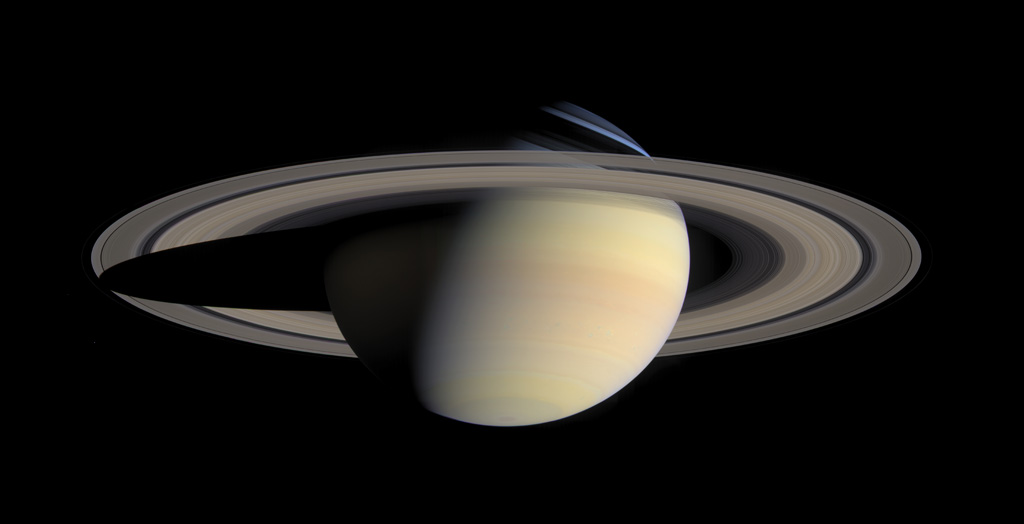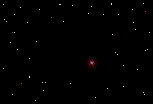

(Credits to Cassini Project Team)
Saturn is a giant planet. Its
diameter, without its rings. is 9 times greater than Earth's; its
mass is 95 times greater. Saturn is 9.5 A.U. from the Sun and
has a lengthy year, equivalent to 30 Earth years.
Like Jupiter, Saturn rotates quickly on its axis, also in
about 10 hours. As a result, it is oblate -bulges at the equator- by
10 per cent.
Being a giant planet, its density
is low, only 0,7 g/cm3, 70% the density of water. The bulk of Saturn
is hydrogen molecules and helium. Deep in the interior, where the pressure
is sufficiently high, the hydrogen molecules are converted into metallic
hydrogen in liquid form. Saturn's atmosphere is mostly composed of hydrogen
(92.4 %) and helium (7.4 %). The remaining 0.2 % is
almost all methane, plus some ammonia and traces of other molecules.
The rings of Saturn are material
that was torn apart by Saturn's gravity. These bits of matter spread out in
concentric rings around Saturn, They are particles of ice with sizes ranging
from tiny to those of cars and larger. Every massive object has a sphere,
called the Roche limit , inside of which blobs of matter cannot be held
together by their mutual gravity. The forces that
tend to tear the blobs apart from each other are tidal forces.
The radius of the Roche limit varies with the
amount of mass in the parent body and the nature of the bodies but is
usually about 2.5 times the radius of the larger body. Saturn's rings lie
inside Saturn's Roche limit, so it is not surprising that the material in
the ring is spread out rather than being collected into a single orbiting
satellite. Saturn has several concentric major rings visible fro Earth. The
brightest ring (the "B-ring") is separated from a fainter broad outer ring
(the "A-ring") by an apparent gap called Cassini's division. Another
ring (the "C-ring") is inside the brightest ring. The passage of Pioneer 11
and Voyager 1 spacecrafts revealed that Saturn has in fact thousands of
rings.
Saturn has a wide variety of moons.
The most known are: Titan, Mimas, Enceladus, Tethys, Dione, Rhea, Hyperion,
Iapetus and Janus.
A joint NASA/European Space
Agency/Italian Space Agency mission called Cassini was launched in 1997 and
is expected to arrive at Saturn on July 1, 2004. Cassini will tour Saturn
and its moons for four years. On January 12, 2005, Cassini is to drop a
probe named Huygens into Titan's atmosphere.



